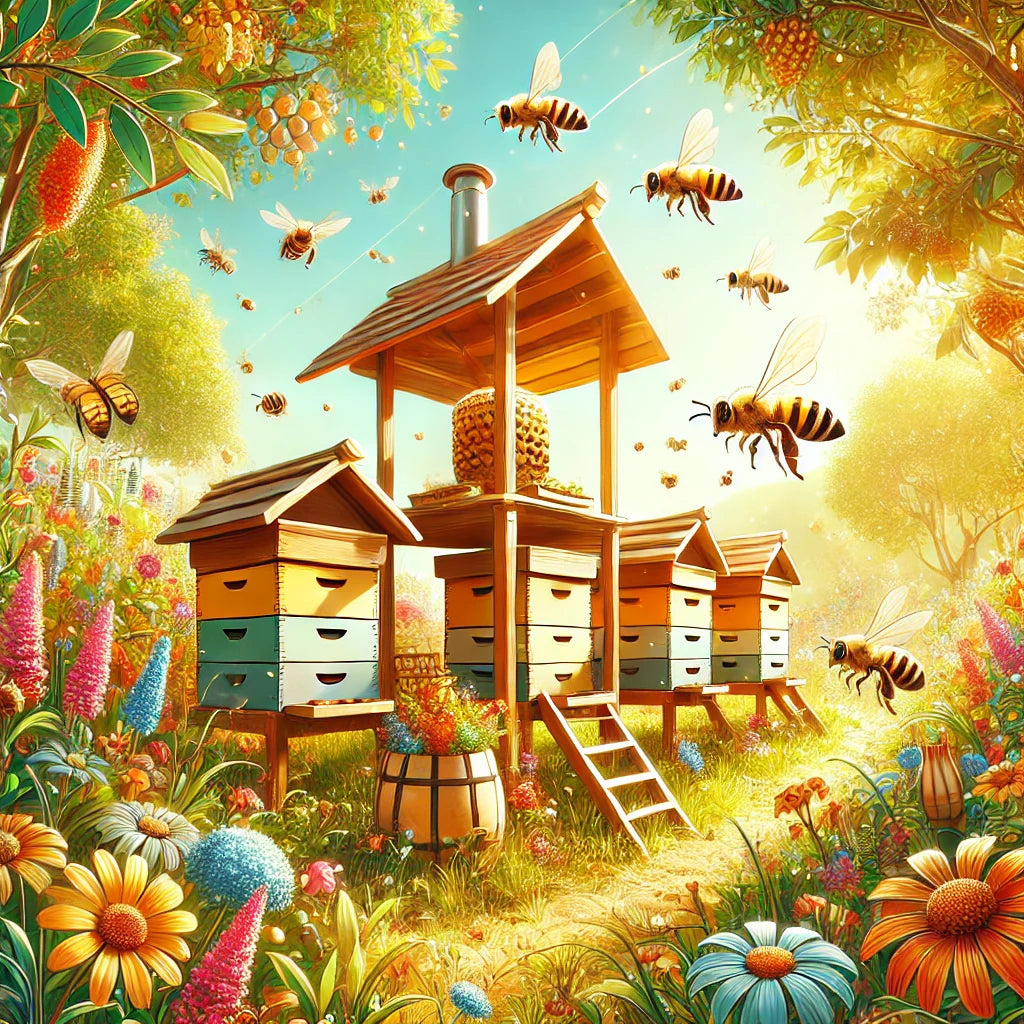At Early’s Honey Stand, they know the importance of proper beehive placement to ensure a thriving colony. Whether you’re just starting out or looking to expand your apiary, knowing what direction your beehive should face plays a critical role in maintaining healthy, productive bees.
Let’s explore the best direction for hive placement, based on expert insights and natural bee behavior.
Why Does Hive Direction Matter?
The direction a beehive faces affects the hive’s microclimate, foraging efficiency, and overall colony health. Bees are highly sensitive to temperature and sunlight, so proper placement helps regulate hive conditions throughout the day and season.
If you’re setting up your hive based on how to start a bee farm, you’ll want to consider factors like sun exposure, wind protection, and foraging routes when positioning your beehive.
The Best Direction for Your Beehive
Most experienced beekeepers, including those at Early's Honey Stand, recommend facing the hive entrance toward the southeast. Here’s why:
- Morning Sunlight: Facing the hive entrance southeast ensures that the bees receive the first rays of the morning sun. This early light helps warm the hive, encouraging bees to start foraging earlier in the day. Early foraging boosts productivity and helps maintain the life cycle of bees.
- Protection from Harsh Weather: Southeast-facing hives are better protected from cold northern winds and heavy rainfall. This positioning helps keep the hive temperature stable, especially during cooler months when bees need to conserve energy to stay warm.
- Avoiding Direct Heat: In the heat of the afternoon, a southeast-facing hive avoids the harshest sunlight, preventing overheating. Bees thrive when they can maintain a consistent, moderate temperature inside the hive.
Other Important Placement Tips
In addition to facing the hive southeast, there are other factors to keep in mind for successful hive placement:
- Wind Protection: Place your hive near natural windbreaks such as trees or hedges. This helps shield the bees from strong winds, especially in winter. Too much wind can chill the hive and exhaust the bees.
- Accessibility for Foraging: Ensure the hive is near abundant flowering plants to give your bees easy access to nectar and pollen. You might also want to use a bee trap attractant to help guide bees to foraging sites.
- Avoid Low Areas: Hives placed in low, damp areas are prone to excess moisture, which can lead to mold or weaken the bees’ ability to regulate hive temperature. Choose a slightly elevated, dry location instead.
Benefits of Proper Hive Placement
Positioning your beehive correctly has numerous benefits. Not only does it help bees maintain a stable environment, but it also boosts colony productivity and honey yield. According to Early's Honey Stand, well-placed hives encourage honey bee swarms to thrive and grow, preventing the need for frequent interventions.
A strong, healthy colony also plays a key role in agriculture, as bees are essential for crop pollination. Knowing why honeybees are so vital to agriculture highlights the importance of giving them an optimal environment to flourish.
Follow Early’s Honey Stand Tips for Success
Beekeeping success starts with the right hive placement. By following the expert advice from Early's Honey Stand—facing your hive toward the southeast, protecting it from wind, and providing abundant foraging—you’ll set your bees up for a thriving and productive season. Proper placement not only supports bee health but also enhances the benefits of bees for your garden and the surrounding ecosystem.
Take your beekeeping to the next level with tools from Swarm Commander. Whether you need bee trap attractants or hive management solutions, we have everything you need for thriving bee colonies. Visit us today to explore our products!
This article gives a comprehensive overview of hive placement, integrating expert advice from Early's Honey Stand and emphasizing the benefits of southeast-facing hives for optimal bee health.
Frequently Asked Questions About Beehive Placement
Q1. How high should I place my beehive?
Beehives should be placed on a sturdy stand, ideally 18 to 24 inches off the ground. This height helps prevent moisture buildup and keeps the hive safe from pests.
Q2. Can I face my beehive in a different direction if southeast isn’t possible?
Yes, if southeast isn’t an option, east or south are good alternatives. The key is to ensure your bees receive plenty of morning sunlight and protection from harsh weather.
Q3. Is it necessary to place hives near water sources?
While it’s beneficial to have a water source nearby, it’s not a strict requirement. Bees can fly long distances to find water, but placing a shallow water source near the hive can be helpful.
Q4. What should I do if my hive faces too much wind?
If your hive is exposed to strong winds, consider placing a windbreak nearby, such as a row of shrubs or a fence. This will protect the hive and help the bees maintain a stable environment inside.
Q5. Can I move my beehive after I’ve placed it?
Yes, but it’s important to do so carefully. Moving a hive can disrupt the bees’ orientation, so it’s best to move it short distances (less than 3 feet) or over longer distances (more than 3 miles) to avoid confusion.



